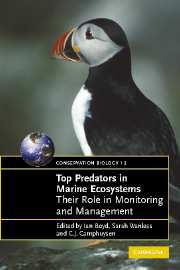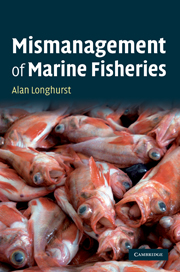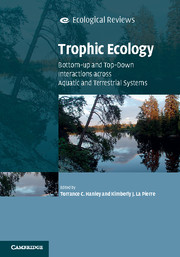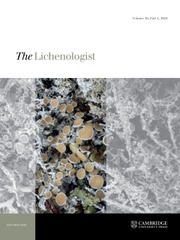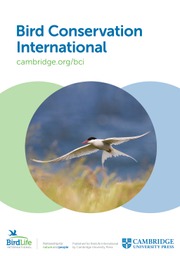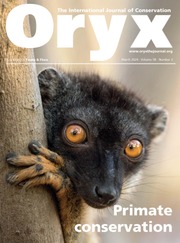Top Predators in Marine Ecosystems
The sustainable exploitation of the marine environment depends upon our capacity to develop systems of management with predictable outcomes. Unfortunately, marine ecosystems are highly dynamic and this property could conflict with the objective of sustainable exploitation. This book investigates the theory that the population and behavioural dynamics of predators at the upper end of marine food chains can be used to assist with management. Since these species integrate the dynamics of marine ecosystems across a wide range of spatial and temporal scales, they offer new sources of information that can be formally used in setting management objectives. This book examines the current advances in the understanding of the ecology of marine predators and will investigate how information from these species could be used in management.
- Explains how marine predators can be used to asses adverse impact on marine ecosystems
- Shows how an understanding of marine predator ecology can be used in the management of marine habitats
- An essential resource for conservation managers, researchers and students
Reviews & endorsements
'Each section of the volume has an extensive bibliography which may be one of its most valuable contents allowing an easy access to the many published sources on the subject. It is indexed in a detailed fashion and will be a valuable addition to a botanical library… an invaluable contribution to the marine conservation literature … I would strongly recommend this book to all biologists to rectify any imbalance that may have occurred in their scientific education' Biologist
' … an interesting and important book … packed with scientific knowledge …' Fish and Fisheries
Product details
May 2006Paperback
9780521612562
392 pages
229 × 153 × 19 mm
0.632kg
85 b/w illus. 9 tables
Available
Table of Contents
- Preface
- 1. Introduction I. L. Boyd, S. Wanless and C. J. Campheysen
- 2. Effects of fisheries on ecosystems: just another top predator? Andrew W. Trites, Villy Christensen and Daniel Pauly
- 3. Physical forcing in the southwest Atlantic: ecosystem control P. N. Trathan, E. J. Murphy, J. Forcada, J. P. Croxall, K. Reid and S. E. Thorpe
- 4. The use of biologically meaningful oceanographic indices to separate the effects of climate and fisheries on seabird breeding success B. E. Scott, J. Sharples, S. Wanless, O. Ross, M. Frederiksen and F. Daunt
- 5. Linking predator foraging behaviour and diet with variability in continental shelf ecosystems: grey seals of eastern Canada W. D. Bowen, C. A. Beck, S. J. Iverson, D. Austin, and J. I. McMillan
- 6. Distribution and foraging interactions of seabirds and marine mammals in the North Sea: multi-species foraging assemblages and habitat-specific feeding strategies. C. J. Camphuysen, Beth Scott and Sarah Wanless
- 7. Spatial and temporal variation in the diets of polar bears across the Canadian Arctic: indicators of changes in prey populations and environment Sara J. Iverson, Ian Stirling, and Shelley L. C. Lang
- 8. Biophysical influences on seabird trophic assessments W. A. Montevecchi, S. Garthe and G. K. Davoren
- 9. Consequences of prey distribution for the foraging behaviour of top predators Iain J Staniland, Phil Trathan and Anthony R. Martin
- 10. Identifying drivers of change
- did fisheries play a role in the spread of North Atlantic fulmars? Paul M. Thompson
- 11. Monitoring predator-prey interactions using multiple predator species: the South Georgia experience J. P. Croxall
- 12. Impacts of oceanography on the foraging dynamics of seabirds in the North Sea F. Daunt, S. Wanless, G. Peters, S. Benvenuti, J. Sharples, D. Grémillet and B. Scott
- 13. Foraging energetics of North Sea birds confronted with fluctuating prey availability M. R. Enstipp, F. Daunt, S. Wanless, E. M. Humphreys, K. C. Hamer, S. Benvenuti and D. Grémillet
- 14. How many fish should we leave in the sea for seabirds and marine mammals? Robert W. Furness
- 15. Does the prohibition of industrial fishing for sandeels have any impact on local gadoid populations? Simon P. R. Greenstreet
- 16. Use of gannets to monitor prey availability in the NE Atlantic Ocean: colony size, diet and foraging behaviour Keith C. Hamer, Sue Lewis, Sarah Wanless, Richard A. Phillips, Tom N. Sherratt, Elizabeth M. Humphreys, Janos Hennicke and Stefan Garthe
- 17. Population dynamics of Antarctic krill Euphausia superba at South Georgia - sampling with predators provides new insights K. Reid, E. J. Murphy, J. P. Croxall and P. N. Trathan
- 18. The functional response of generalist predators and its implications for the monitoring of marine ecosystems Christian Asseburg, John Harwood, Jason Matthiopoulos and Sophie Smout
- 19. The method of multiple hypotheses and the decline of Steller Sea Lions in western Alaska Nicholas Wolf, Jason Melbourne and Marc Mangel
- 20. Modelling the behaviour of individuals and groups of animals foraging in heterogeneous environments J. G. Ollason, J. M. Yearsley, K. Liu and N. Ren
- 21. The scenario Barents Sea study: a case of minimal realistic modelling to compare management strategies for marine ecosystems Tore Schweder
- 22. Setting management goals using information from predators Andrew J. Constable
- 23. Marine reserves and higher predators Sascha K. Hooker
- 24. Marine management: can objectives be set for marine top predators? Mark L. Tasker.

